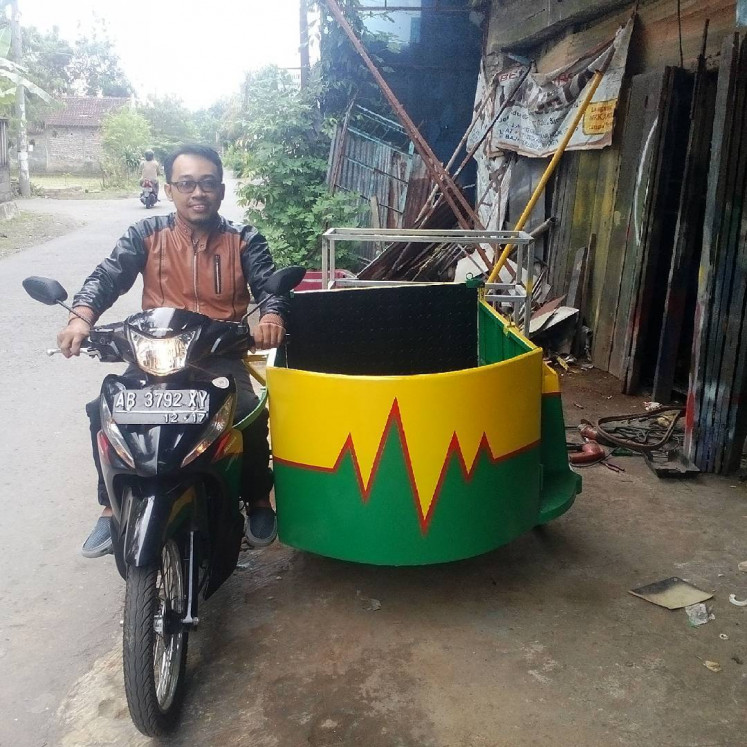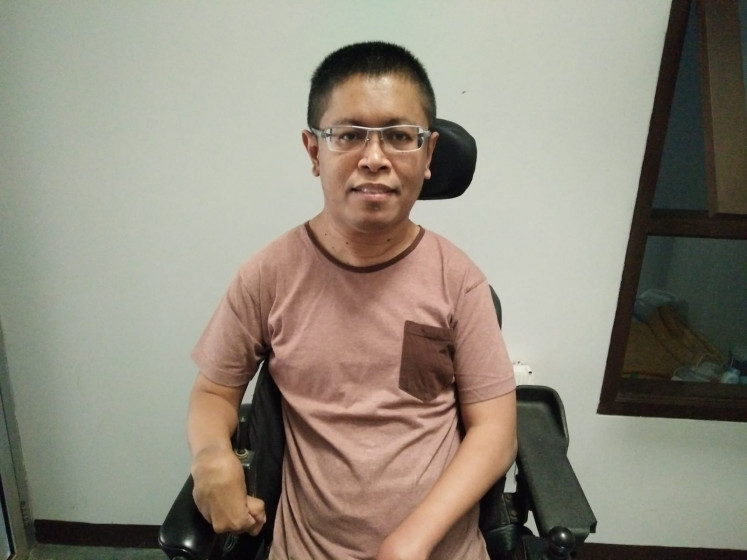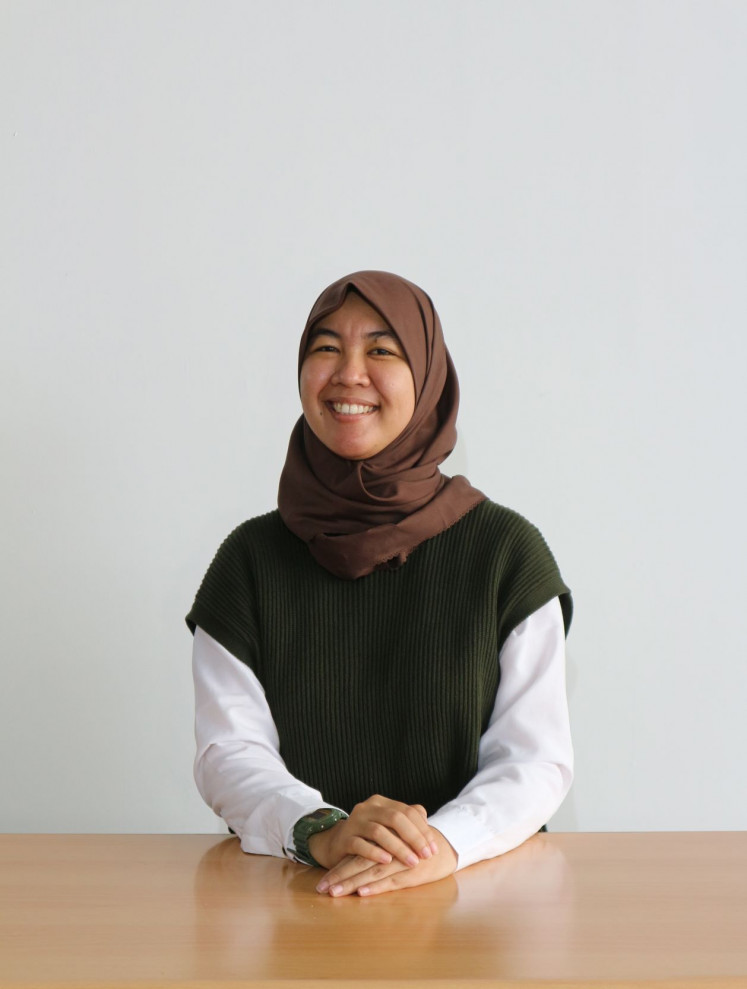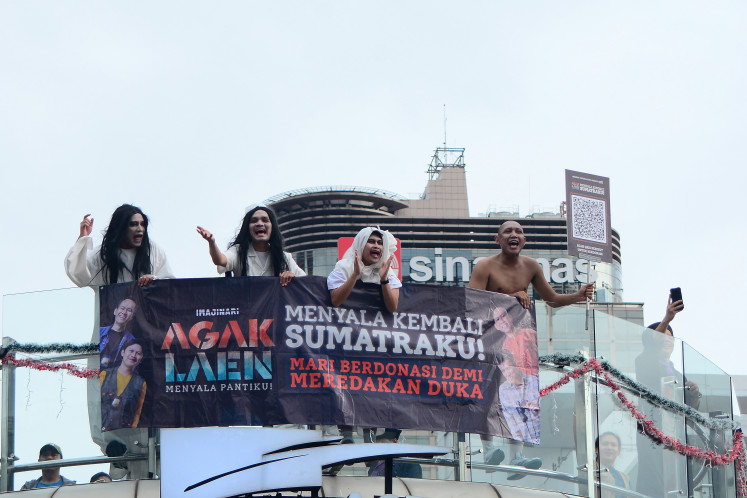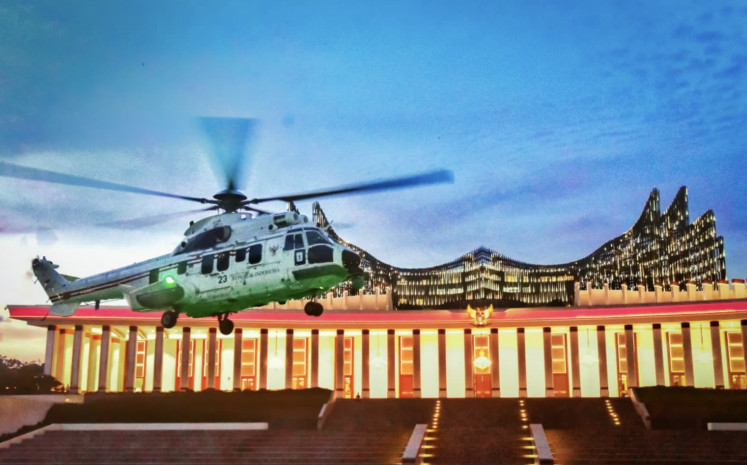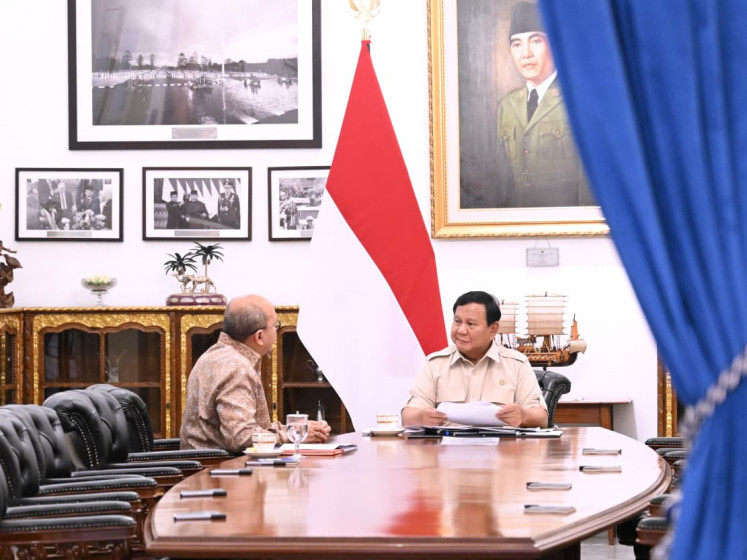Popular Reads
Top Results
Can't find what you're looking for?
View all search resultsPopular Reads
Top Results
Can't find what you're looking for?
View all search resultsHow non-inclusive public transportation alienates disabled Indonesians
Change text size
Gift Premium Articles
to Anyone
N
on-inclusive public transportation excludes disabled Indonesians, forcing them into seclusion from social life and professional opportunities.
Hari Kurniawan, 44, was born with a congenital disability that took away his ability to walk. The Jakarta native is a frequent public transportation user, but his disability makes living in Indonesia a constant challenge. Cak Wawa—as he nicknames himself—often finds ojek (motorcycle taxi) declining to pick him up.
“They don’t give me any clear reason why they don’t want [to take] me as a passenger. Although I told them I could pay, they ping-ponged me around other drivers.”
Cak Wawa added that he had experienced this not only in Jakarta but also in other cities, including Malang and East Java. Suffice it to say getting around has become an impossible task.
Wheelchair-accessible vehicles (WAV) are still relatively hard to find in Indonesia. Many wheelchair users still have to depend on informal modes of transportation, such as small-sized vehicles that have been modified to accommodate their needs. Individuals primarily own and operate these altered taxis, sometimes leased.
Triyono, the founder of Difa Bike, a motorcycle taxi service based in Yogyakarta for the disabled, states that despite their ojek having been modified into a wheelchair-friendly three-wheeled vehicle, they are unable to fill the demand in certain areas.
“Even if you are at the airport, it’s hard to find a WAV if you’re in a wheelchair,” Triyono said.
“So our role, as one of the informal modes of transportation, is not only to provide accessible transportation but also to educate and raise awareness that disability communities also deserve the right to have accessible transportation.”
Rodhi Mahfur, 31, a painter, says that most of the available WAV are too costly for poor Indonesians.
“They are mostly available at the airport or the hospitals. When you call [the WAV taxis] to your house, they will charge you more,” Rodhi said.
Struggling to find access
The National Team for Accelerated Poverty Reduction (TNP2K) reports that as of March 2019, more than 9 percent (23.3 million) of Indonesia’s population have disabilities. Monash University’s research in 2017 found that most people with disabilities in Indonesia do not use assistive devices such as hearing aids and walking aids. For example, according to the data, 80 percent of those who report vision impairment do not have glasses and 28 percent of those who need a cane do not have one.
As for wheelchair users, the available public transportation does not support their needs. Based on data released by Monash University, 38 percent of the disabled community in Indonesia do not have access to public transportation, 48 percent choose not to use the available public transportation and only 14 percent use general public transportation.
Faisal Rusdi, 47, a painter and a member of the Association of Mouth and Foot Painting Artists (AMFPA), said that his mobility to ride in taxis and cars is often too challenging.
“Someone has to lift me from the wheelchair to the car’s seat and vice versa. Ideally, if suitable taxis are available for the disabled community, wheelchair users don’t have to move and can remain [seated] in their wheelchairs,” Faisal said.
With the lack of access to disability-friendly transportation, sometimes Faisal and his wife, who is also a wheelchair user, opt for an electric wheelchair to reach their destination.
“Sometimes we use the electric wheelchair on the road, as long as the destination is near. But it’s perilous because we’re in the outer lane of the road,” Faisal continued.
Calling for change: Faisal Rusdi, a wheelchair user in Bandung, describes that not all WAV in Indonesia are designed to be compatible with all kinds of wheelchairs. (Courtesy of Faisal Rusdi) (Courtesy of Faisal Rusdi/.)Deliani Siregar from the Institute for Transportation and Development Policy said that the debate about inclusive public transportation in Indonesia remained unresolved for the past years - she uses the parable of “which one comes first, the chicken or the egg.”
“At this moment, the available transportation hasn’t been able to meet the needs of the disability community, especially for those who use wheelchairs,” Deliani said.
“Because the challenge that we are currently discussing is not only about accessibility but also the design of the transportation, which is equally important,” she continued.
Deliani also addressed that if this matter remains unresolved, it can eventually affect the activities and mental condition of people with disabilities.
Budi Ratmoyo, 48, a tailor who volunteers as an ojek driver in Sidoarjo, stated that a 23-year-old customer of his with cerebral palsy has not been out of the house for 16 years after his mother could no longer carry him on their motorcycle.
“It’s a challenge because that’s the only person he could rely on. Every day, I meet different individuals who face challenges. We have to open our eyes and hearts to individuals who aren’t able to access the world because they don’t have transportation options,” Budi said.
Deliani further adds that Indonesia’s sociocultural ableism is another challenge in building accessible transportation.
“For example, we suggest that bus stops shouldn’t be too narrow, but the feedback we often received was ‘Are there even any disabled people with high mobility?’ ” Deliani said.
Their voice: Deliani Siregar explains that accessible design for the disability community is a key, but in reality, it is often forgotten. (Courtesy of Deliani Siregar) (Courtesy of Deliani Siregar/.)Support needed
Creating disability-friendly transportation requires a collective effort. Triyono explained that taxis are still preferable to modified motorcycles in larger cities like Jakarta, with higher mobility.
“Surely, the modified motorcycle helps. We cannot deny that even though it’s not 100 percent convenient. Could you imagine if someone had to go to the hospital for a health check-up with a three-wheeled vehicle?” Triyono added.
However, when it comes to providing WAV in taxi form, Triyono says there are financial challenges. A wheelchair-accessible car is twice the price of an altered motorcycle, roughly up to Rp 7 million (US$ 458).
Richie Bestianto, the general manager of Motion Aid, a WAV provider based in Jakarta, says that modifying a WAV with a capacity of 250 kilograms requires Rp 19.5 million.
For Triyono, the cost of alteration has not been able to meet the demand from other more significant areas in Yogyakarta and Jakarta. Especially during the pandemic, Triyono has been struggling to run his business mainly due to fewer tourists coming to Yogyakarta.
“We [Difa Bike] used to have 15 wheelchair-accessible cars supplied by individuals, but then we only had one during the pandemic. The providers asked for their car back,” Triyono said.
For now, they have not lost hope.
Deliani further added that the desire to create accessible transportation for the disabled community is crucial.
“The operator of the transportation needs to remember, if a space is considered accessible for the disability community, it will be more accessible for non-disabled persons,” Deliani concluded.



